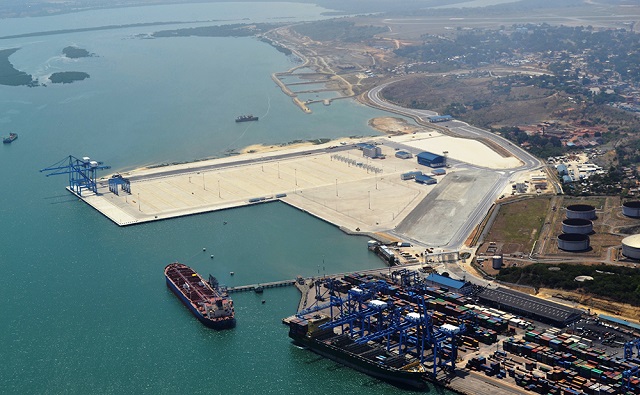
In both cases, improved connectivity failed to catalyse industrialization and instead encouraged land speculation as it opened up new spaces to real estate investment
Kampala, Uganda | AGENCIES | The African Union’s flagship Agenda 2063 initiative prioritises large-scale infrastructure development and promises to “link the continent by rail, road, sea and air”.
This is being undertaken in parallel with efforts to improve economic integration. In 2021, the 54 countries on the continent made history when they began trading within the African Continental Free Trade Area. It is the largest free trade area in the world.
Proponents of an approach to development that focuses on infrastructure claim that improving connectivity will foster industrialisation and planned urbanisation. It gives policy makers tools to create well-planned urban regions that can compete in the global economy and attract foreign direct investment. These, in turn, will foster industrial growth.
The argument goes that setting up development corridors, special economic zones, ‘new cities,’ and drawing up city master plans will lead to the development of urban spaces that can be ‘plugged in’ to global production networks. This will boost the productivity and competitiveness of African industry. Ultimately African countries will export more high-value manufactured goods rather than natural resources and unprocessed agriculture commodities.
Our research calls these claims into question. We assessed the impact of transnational development corridor projects in Kenya and Ghana. We found that in both cases, improved connectivity failed to catalyse industrialisation. Instead, it encouraged land speculation as it opened up new spaces to real estate investment.
This is a problem. Failure to trigger industrial growth risks locking Africa into the global economy as an exporter of raw materials. On top of this, cities without industry have higher levels of inequality than their more industrialised counterparts.
We concluded that infrastructure that links mines to ports isn’t enough. It needs to be accompanied by policies that discourage speculation in land, and encourage productive investment in factories that can process raw materials and provide jobs to the continent’s young urban workforce.
Infrastructure-led development in Africa
Poor quality infrastructure is a legacy of neoliberal structural adjustment programmes imposed on African countries by the International Monetary Fund in the 1980s and 1990s. Governments that received these loans were largely prohibited from investing in infrastructure. But private investors showed little interest in building large-scale transnational logistics and energy infrastructure.
The 2008 financial crisis changed everything. Many governments responded by reintroducing national development planning. These included large-scale infrastructure projects. These projects could be financed because low interest rates in advanced-industrial countries meant that borrowing was cheap.
By 2018 more than 50 development corridors were in various stages of construction across Africa. Many governments were fully committed to infrastructure-led development. Transportation networks and energy grids were expanded at break-neck speed in a continental competition.
Case study 1: Ghana
The Abidjan–Lagos Corridor is a project to build a transnational six-lane highway connecting Ghana’s capital, Accra, to Abidjan, Lome, Cotonou and Lagos.
The project was launched in 2014 by the Economic Community of West African States with the support of the African Development Bank and African Union. More than 50% of the corridor traverses Ghanaian territory.
The initiative enjoys broad political support in Ghana. Through his One District One Factory policy, President Nana Akufo-Addo of the National Patriotic Party has sought to support industrialisation across a range of economic sectors, from textiles to pharmaceuticals. He has fast-tracked the Corridor project and lobbied to host the management authority of the project.
The highway is the cornerstone of a rapidly urbanising West African ‘megacity region’. Real estate projects range from a planned new city 50km from Accra to unplanned urban sprawl that extends throughout the corridor.
The corridor has not significantly boosted Ghanaian industrial capacity. According to UNIDO data, manufacturing accounted for 14% of Ghana’s GDP in 2008. By 2022 this figure had shrunk to a mere 11.8%. It has, however, created opportunities for real estate speculation.
Case study 2: Kenya
We found similar results in Kenya. In 2008 the government launched Kenya Vision 2030. This targeted a number of key economic sectors. Agro-processing, textiles, leather and construction materials are some of these. The hope was that it would nearly double manufacturing’s share of gross domestic product.
The Kenyan Government went on an infrastructure spending spree. By 2019 Kenya was undertaking more large-scale infrastructure projects than almost any other country in Africa.
Many of these projects are included in the Lamu Port–South Sudan–Ethiopia Transport Corridor. This is designed to integrate northern Kenya and its surrounding borderlands into a transnational region that boasts world class logistics infrastructure. In addition, the Standard Gauge Railway was built to link Mombasa and Nairobi, while a series of road projects around Nairobi were designed to decongest the city centre.
But Kenya’s manufacturing sector has generally disappointed. According to UNIDO manufacturing value added as a proportion of GDP decreased from 11.8% in 2008 to a 8.9% in 2022.
The infrastructure boom has, however, accelerated urban sprawl and speculation. Investors have rushed in to secure land adjacent to new projects in Isiolo and Lamu. North of Nairobi, the Thika Superhighway has catalysed a peri-urban real estate boom. For example, international developer Rendeavour is building a new city with state-of-the-art amenities for 150,000 residents.
Elsewhere along the highway local landlords have built high-rise tenements to capitalise on the booming low-end rental market.
What must be done?
Our findings do not rule out the possibility that infrastructure-led development could drive industrialisation in the future. But they suggest that it must be accompanied by policy that discourages speculation in land and real estate.
Currently, property in many African cities is not taxed, so many elites consider it the ‘safest bet.’ Levying taxes on property would discourage speculation and generate revenue that could be used for public spending. This approach has worked in East Asian countries that have successfully achieved industrial transformation.
Without this, infrastructure-led development is likely to contribute to further urbanisation without industrialisation. African governments will be unlikely to achieve their industrial objectives, and remain dependent on exporting natural resources and agricultural goods.
*****
Source: The Conversation
 The Independent Uganda: You get the Truth we Pay the Price
The Independent Uganda: You get the Truth we Pay the Price



